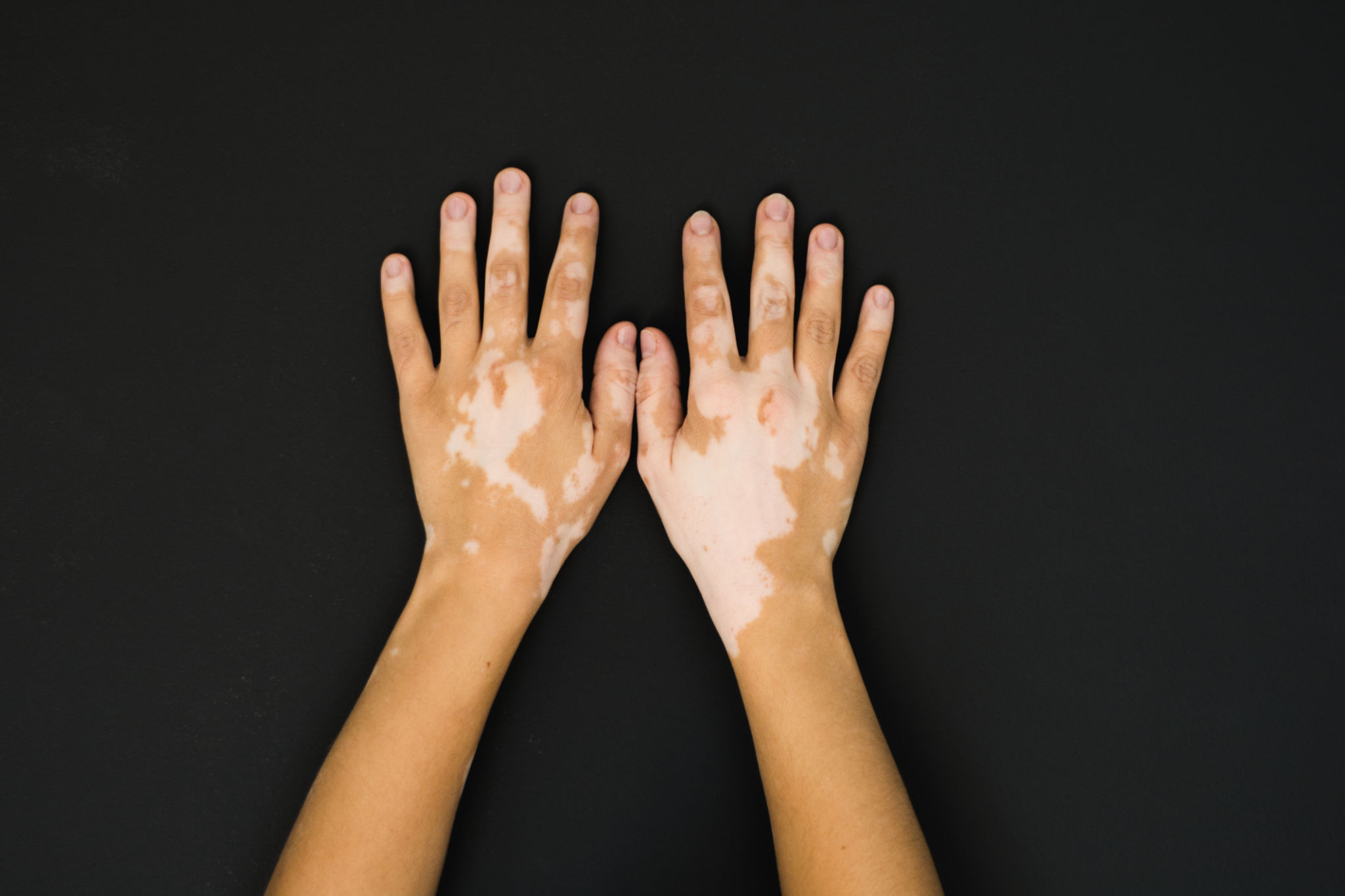What is Vitiligo or Leucoderma, White Patches
A condition in which the skin turns white due to the loss of pigment from the melanocytes, cells that produce the pigment melanin that gives the skin color. In vitiligo, the melanocytes are destroyed, leaving depigmented patches of skin. The hair that grows in areas affected by vitiligo may also turn white. The skin is not otherwise damaged. People with vitiligo must protect their skin from exposure to the sun. Also known as piebald skin and acquired leukoderma. Vitiligo is not transmittable; people cannot catch it from each other.


What are the causes of Vitiligo
Vitiligo occurs when melanin-forming cells (melanocytes) die or stop producing melanin — the pigment that gives your skin, hair and eyes color. The involved patches of skin become lighter or white. The causes of vitiligo are yet to be precisely established, but most of the research so far points to the following:
- A disorder in which your immune system attacks and destroys the melanocytes in the skin
- Family history (heredity)
- A trigger event, such as sunburn, stress or exposure to industrial chemicals
Treatment & Procedures
Topical drugs
New Vitiligo Surgical Techniques:
Skin grafting
- Normal skin is used as donor tissue and then grafts are surgically transplanted on areas of vitiligo. The new skin grafts start producing pigment.
- Patients who are candidates for this procedure must have stable vitiligo, or vitiligo that has not changed for at least six months.
- This procedure can be used for patients with limited areas of vitiligo and also in those with more extensive disease.
- Skin grafting has a high success rate – 80 to 90 percent in most patients.
Melanocyte transplants
- In this procedure, melanocytes and keratinocytes (the cells of the top layer of skin) are obtained surgically under local anesthesia from the patient and then grown in a culture in the lab overnight. Once grown, the cells are then placed or applied on the skin’s vitiligo patches.
- This therapy is administered in-office and best used in areas of limited vitiligo where the vitiligo has been stable for at least six months.
- Melanocyte transplants have a very high success rate of 95 percent.
Light therapies:
There are several types of laser and light therapies that can help treat vitiligo, and a few require the patient to be exposed to a controlled dose of ultraviolet (UV) light.
PUVA(Psoralen + UVA) Therapy
- This light therapy is used when less than 20 percent of the skin surface is affected by vitiligo.
- UVA light is used with the topical medication psoralen, which is applied to areas of vitiligo prior to light treatment.
- For best results, PUVA treatments are administered weekly for up to six months.
- Most patients will see a 50 to 55 percent improvement in four to six months.
- Maintenance therapy may be required with either additional PUVA treatments or in combination with topical medications.
Narrowband UVB
- This light therapy is used in vitiligo patients with more extensive disease or in cases where more than 20 percent of the skin surface is affected by vitiligo.
- A specific wavelength (311 nanometers) is administered to the entire surface of the skin to treat areas of vitiligo.
- On average, patients will experience a 60 to 65 percent improvement after 12 to 18 months of therapy.
Excimer Laser
- The excimer laser (308 nanometer wavelength) is used with this therapy, and only the areas of skin affected by vitiligo receive the laser energy.
- This therapy works well for the face.
- The duration of treatment is two to six months, and the average rate of improvement is 70 percent.
- To maintain results, topical medications can be used following treatment.
